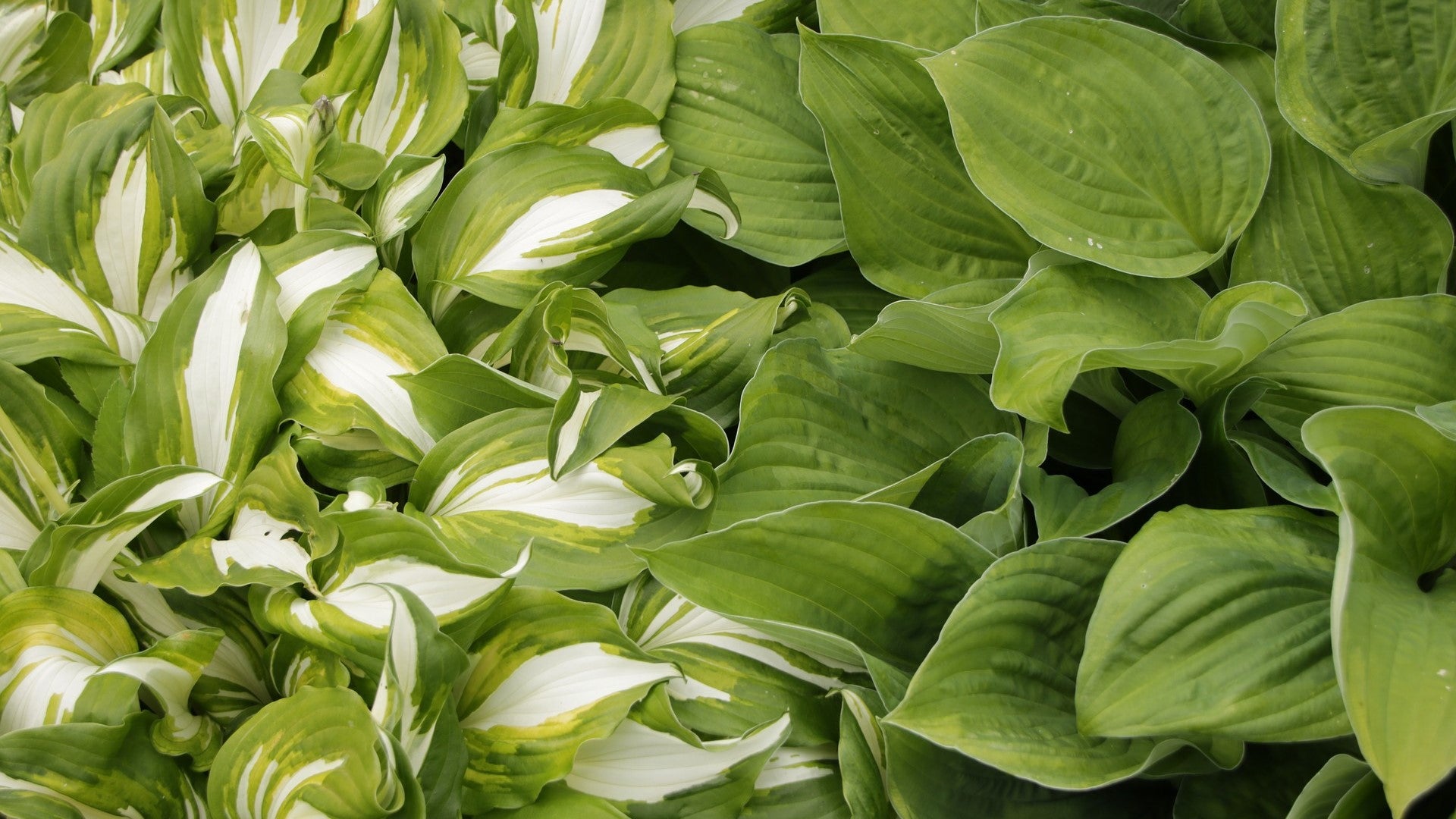By Cindy King, CPH, The Mill
Hostas are herbaceous shade tolerant foliage plant that is very long-lived. There are over 6,100 varieties on the market, and more are developed all the time. Leaves can be yellow, all shades of green, blue green, cream, white, and reddish. They range from 48 inches wide and tall to 6 inches wide and tall and all sizes in between.
Hostas are native to northeast Asia. They are hardy from zones 3-8 and spread by rhizomes or stolon. It can take 4-6 years for a Hosta to fully mature and reach maximum size.
The brighter the leaf on the Hosta the more direct sun it can take but all prefer afternoon shade or dappled shade. Due to the size of the leaves on the larger varieties they also like moist organic loamy soils that drain well. Hostas are prone to browsing by deer and rabbits especially if planted in an isolated woodland bed. Try planting daffodils or narcissus among the Hosta as they are deterrents for deer and other grazers.
Slugs and snails can damage the leaves on Hosta. Try dusting the soil around your Hosta with sand as this irritates the stomachs of the crawlers. Diatomaceous earth has the same effect.
It is best to fertilize your Hostas in spring once they pop out of the ground. Division should be done every 4-6 years to keep the plant vigorous. Spring is the best time for division, and you should lift the entire clump, divide into at least one bud divisions, and replant in loamy organic soil. When dividing the clump cut with a sharp knife from the crown down to insure a good bud division.
The most fragrant Hosta is Hosta plantaginea. It is green-leaved, and flowers open in the late afternoon and evening and close by morning. One of the largest is Empress Wu which can grow to 5 feet tall by 6 feet wide and is upright. Humpback Whale another large variety can grow to 4 feet tall by 8 feet wide and cascades over. A few of the smallest are Baby Bunting 6 inches tall and wide and Mouse Ears 5 inches tall by 7 inches wide.
Many of the newer varieties are now being bred to have red to maroon stems. These include Cherry Berry, Raspberry Sundae, Red October, and Fire Island. These all grow to 1-2 feet tall by 2-3 feet wide.
Keep in mind Hostas add great color and texture to the woodland or shade garden but always look best if planted in groupings.


























